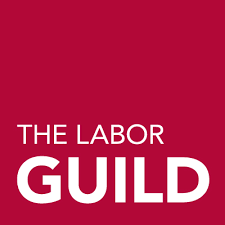Boyle Fellow Blog: 100th Anniversary of the Wagner Act
by Bruce Tran, Boyle Fellow
100 years ago today- July 5th, 1935- President Franklin Delano Roosevelt signed the historic National Labor Relations Act of 1935 (also known as the Wagner Act) into law. It empowered American workers with the right to organize, form and engage in collective bargaining into unions. This allowed them to improve their working conditions and, in the process, raise the standards of living for American workers and laborers.
The Act was the culminating result of the bloody, violent strikes by union organizers for miners against steel conglomerate corporation Colorado Fuel and Iron that hired mostly poor immigrants under poor and unsafe working conditions. When the corporation refused to meet the demands of the union, they forced the strikers out of company towns and into tent colonies while “scabs” (replacement, non-union workers) were escorted to work by the Colorado National Guard. When the violence between the two groups inevitably escalated, it resulted in the tragic Ludlow Massacre. The massacre was where the Colorado National Guard and Colorado Fuel and Iron’s private militia attacked the tent colony of 1200 strikers and their families that killed twenty-one people including women and children.
However, not all was lost for the miners. Due to the massacre, company owner John D. Rockefeller lost public support and gave the labor movement the push it needed. Labor activists banded together, formed coalitions, and protested Rockefeller, who was among the richest and most influential Americans at the time. This led to reforms in labor laws involving the banning of child labor, the eight-hour workday and the formation of the National Labor Relations Board (NLRB).
The NLRB is tasked with reviewing whether a worker or their unions can act in a manner that supports their rights to collective bargaining such as electing an exclusive representative. In addition, because legal costs can be expensive when going into litigation with their employer companies, the NLRB can help with the fees on the union or workers’ behalf. The rulings they make are legally binding and are based on their interpretation of labor legislation unless a court finds that the NLRB overstepped its authority beyond what congress designated as its responsibility.
However, the Wagner Act and the formation of the NLRB was not all encompassing for just any worker in the United States. It did not cover government employees, rail workers, airline workers or the Federal Reserve Bank. The Wagner Act applies to private sector employees only and exempts independent contractors, domestic workers (cooks, laundry, babysitters, dry cleaning etc.) and agricultural farm workers. Furthermore, it did not protect racial minorities such as Blacks, Latin(x) or Asians despite the push back from labor unions desiring racial equality.
The Wagner Act efficacy was slowly eroded by the amendments made to it in the Taft-Harley Act of 1947 (also known as Labor Management Relations Act [LMRA]). This Act prohibits certain union practices and requires disclosure of certain financial and political activities by unions. Unions were prohibited from causing secondary strikes such as pressuring another group from refusing to do business with the company they are striking against. Management, for their part, were not allowed to refuse to hire a prospective employee based on their union membership status (or lack thereof). The bill was initially vetoed by President Truman, but a Republican Party majority Congress overrode the veto. They saw it as necessary to counter union abuses, to end a string of large-scale strikes that broke out after the end of World War II, and to suppress Communist influence in the labor movement during the Cold War era at the height of McCarthyism and the Red Scare, where scaremongering was rampant against anyone with suspected communist sympathy or pro-labor ties.
In conclusion, the Wagner Act provided the basis for a litmus test for the modern US labor movement for employer-employee relations. While it has its flaws in terms of which employees and what industries are covered under the act- as well as lack of provisions against discrimination towards non-white employees- the act was the result of the catalyst that is the Ludlow Massacre; the sacrifice of many workers demanding better working conditions that we have today as standard policy like heavy restrictions on child labor and the eight-hour workday. Nearing the 100th anniversary since its signing into law, it is important to remember progress in the labor movement is not always linear, nor is it always peaceful. It is the result of both organization and collective bargaining. The origin of the act serves as a reminder that when peaceful means to advocate for their rights are exhausted, it can lead to tragedy before any change can be considered on the table.
“Your safety regulations are written in blood.” -Unknown
Join Our Mailing List
For Guild news, Labor School updates, Workshops, and CGA information.

